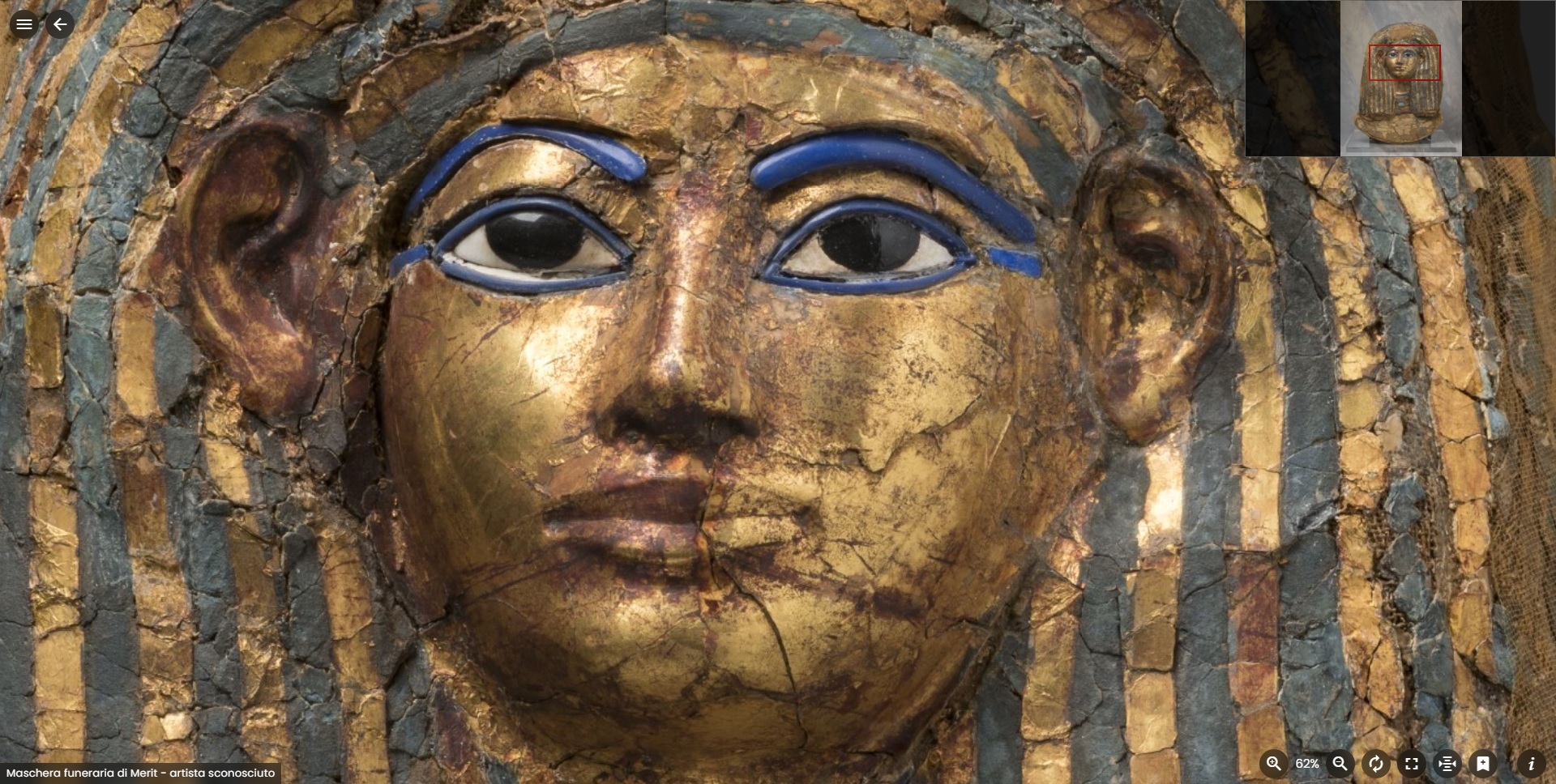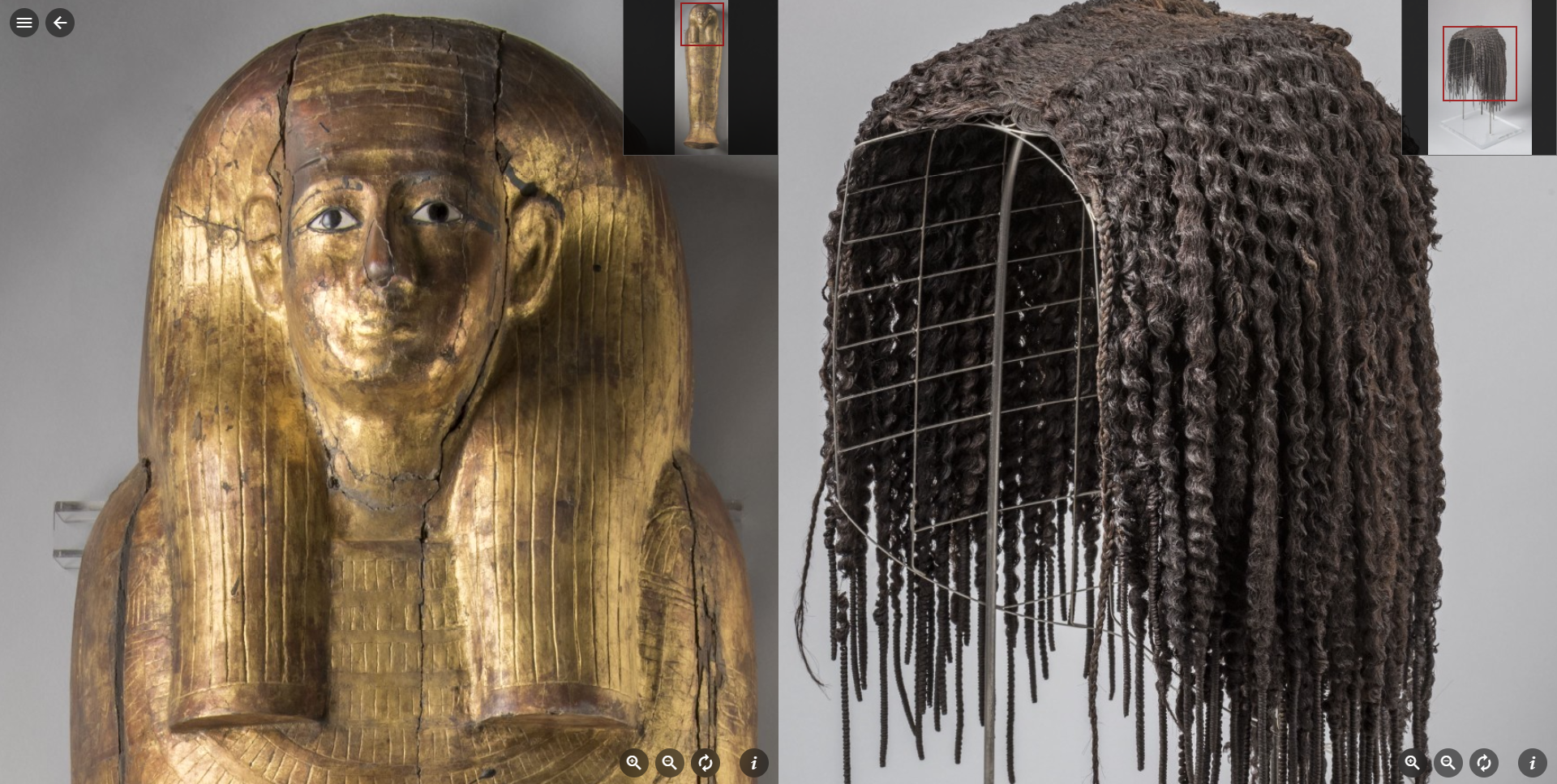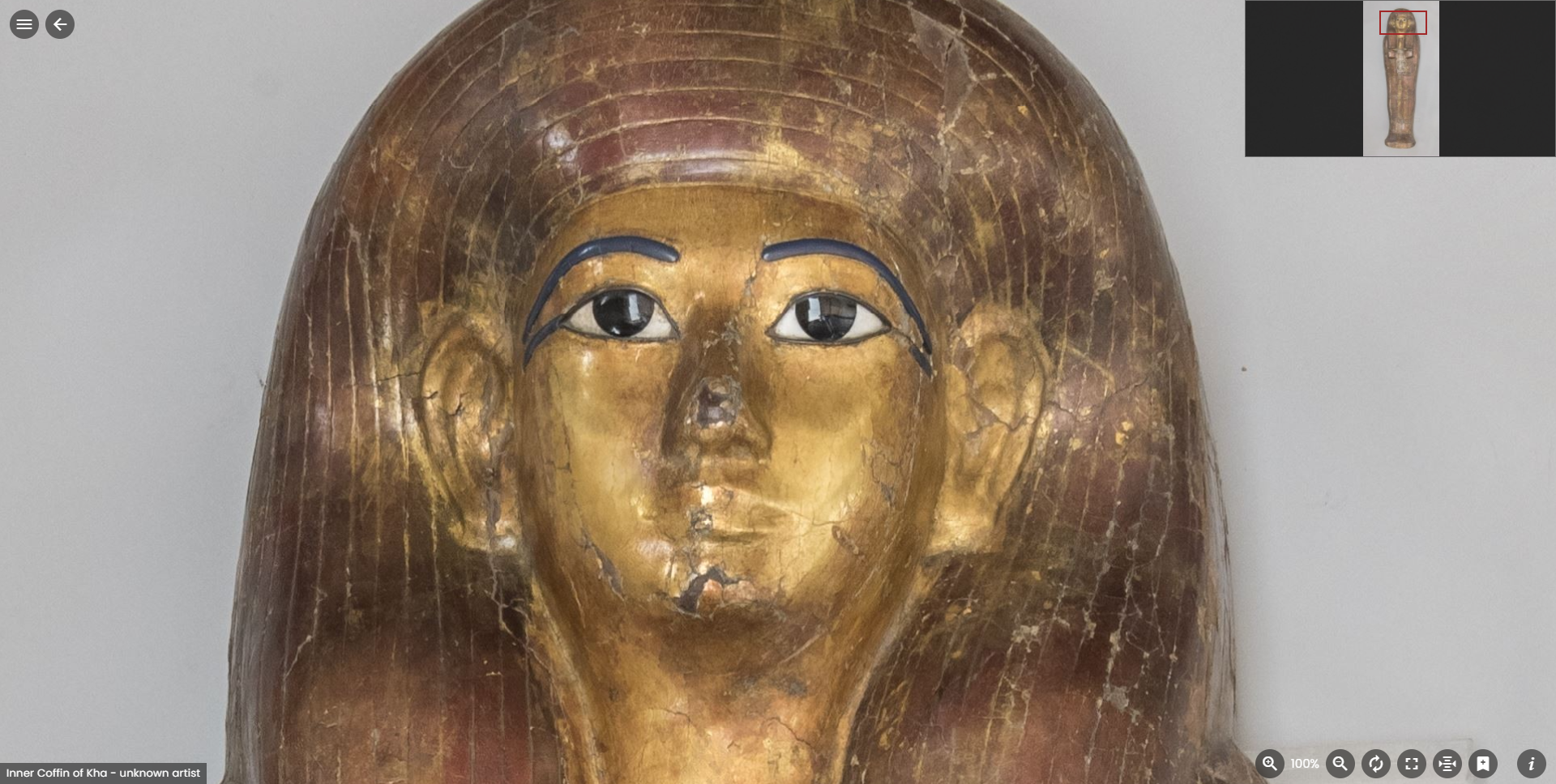ArtCentrica
21 February 2022
A love story at the Egyptian museum
High school / University
ArtCentrica keeps expanding collections!
The Egyptian Museum in Turin is the oldest museum, worldwide, dedicated entirely to the Nilotic civilization, with a quantity of valuable artifacts that makes it second only to the Egyptian Museum in Cairo.
Always a vibrant, dynamic, and modern institution, the Egyptian Museum has made available a series of digital images of its collections, which we have made available and searchable in very high resolution on ArtCentrica.
As with other works of art, users will be able to zoom in on papyri, sumptuous sarcophagi, and masks down to the smallest details, compare them with other works in the app-for example, those of Greek and Roman art-create in-depth lessons, annotate details, and so on.
A LOVE STORY AT THE EGYPTIAN MUSEUM

Among the artifacts preserved at the Egyptian Museum, the mask of Merit is certainly one of the most famous, not least because of the story that links it to its owner. Wife of the architect-chief of Pharaoh Amenhotep III, 18th dynasty (1543 – 1292 B.C.), Kha, Merit passed away before her husband, who as a gesture of love chose to give her the sarcophagus he had prepared for himself.
The tomb, which was completely intact, as well as the mask and all of Merit and Kha’s funerary goods, were found on Feb. 15, 1906, during the Italian Archaeological Mission to the site of Deir el-Medina.

Merit’s mummy was found protected by a funerary mask, made with the technique of cartonnage – cloth bandages were impregnated with plaster, to simulate a kind of papier-mâché. The mask was gilded and decorated with colored glass paste and precious stones.
As is well known, the Ancient Egyptians used to endow the deceased with rich grave goods, so as to accompany him or her into the afterlife and enable him or her to best continue existence in another life. A large number of everyday items were found in the tomb of the couple, in addition to their sarcophagi, such as: tunics, the senet (an ancient board game), sheets, chairs, cabinets, fossilized food, the architect’s tools that Kha used.
Also, a papyrus with formulas from the Book of the Dead-which according to the ancient Egyptians served to protect the deceased on their journey to the afterlife-, jewelry, beauty objects, and Merit’s wig made of real hair.

Who were Merit and Kha?
Living between 1450 and 1380 B.C., Merit and Kha knew three pharaohs: Amenophis II, Tutmosis IV and Amenophis III. Both died at about 60 years of age, a remarkably long age for the time, but one that was well suited to those fortunate enough to be part of a wealthy family; the couple had three children, a girl and two boys.
Fun fact: The name “Merit” means “God’s beloved,” and in the Hebrew language it became what we commonly know today, which is “Mary.”
